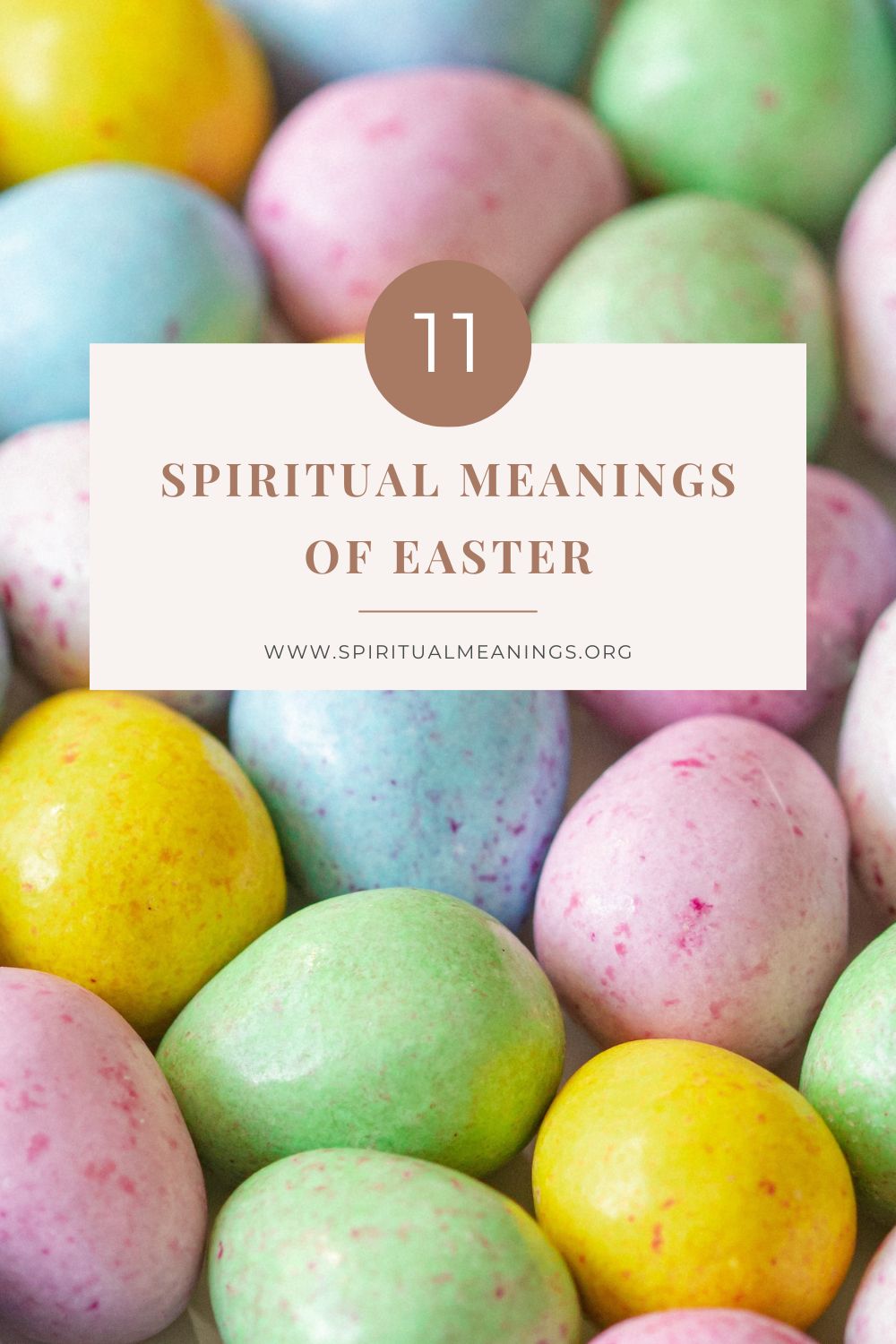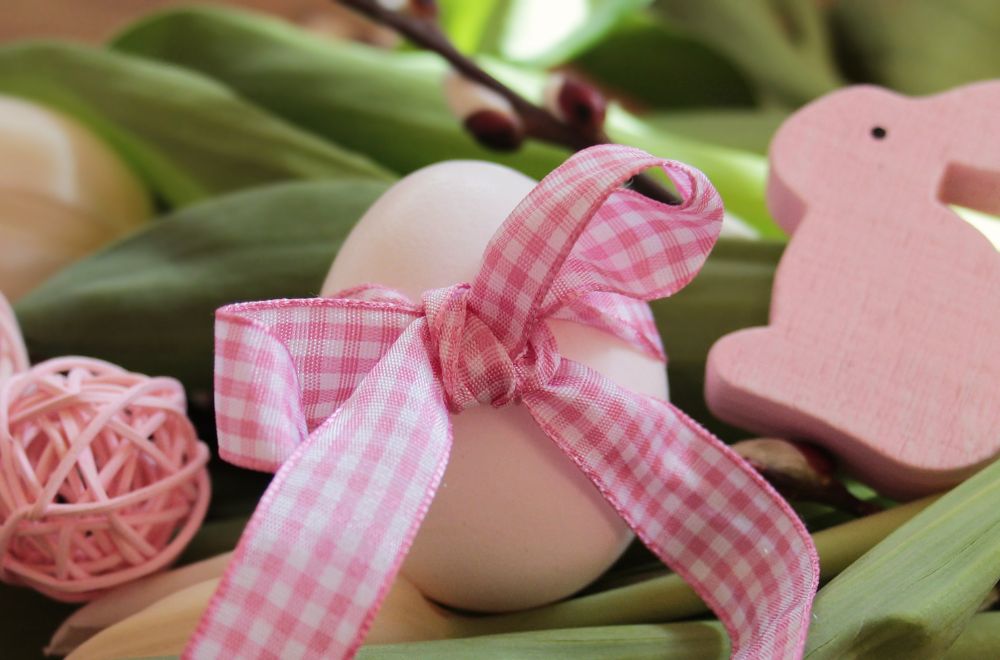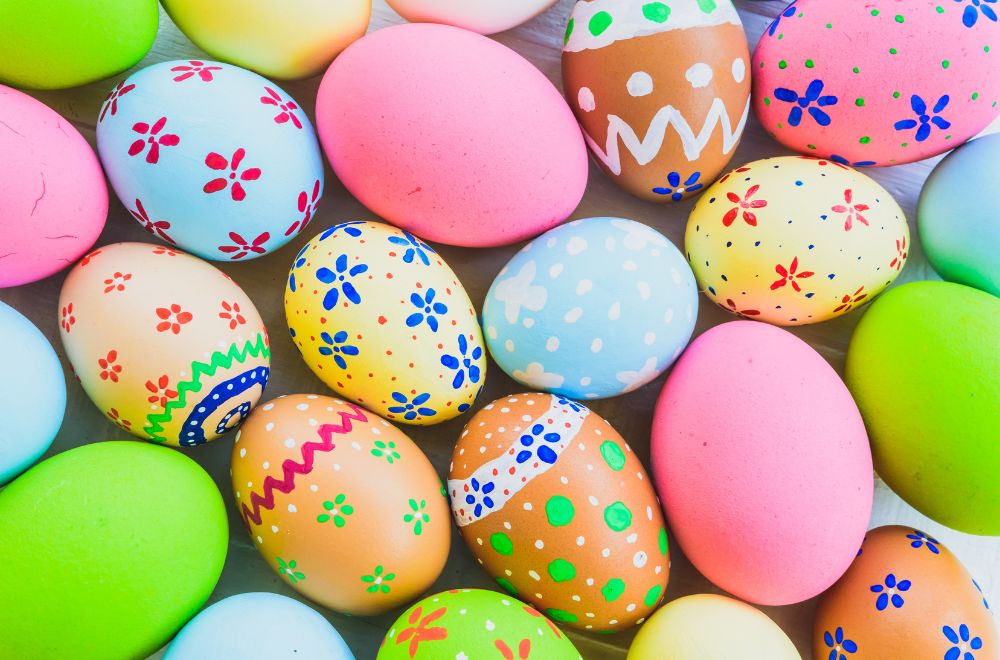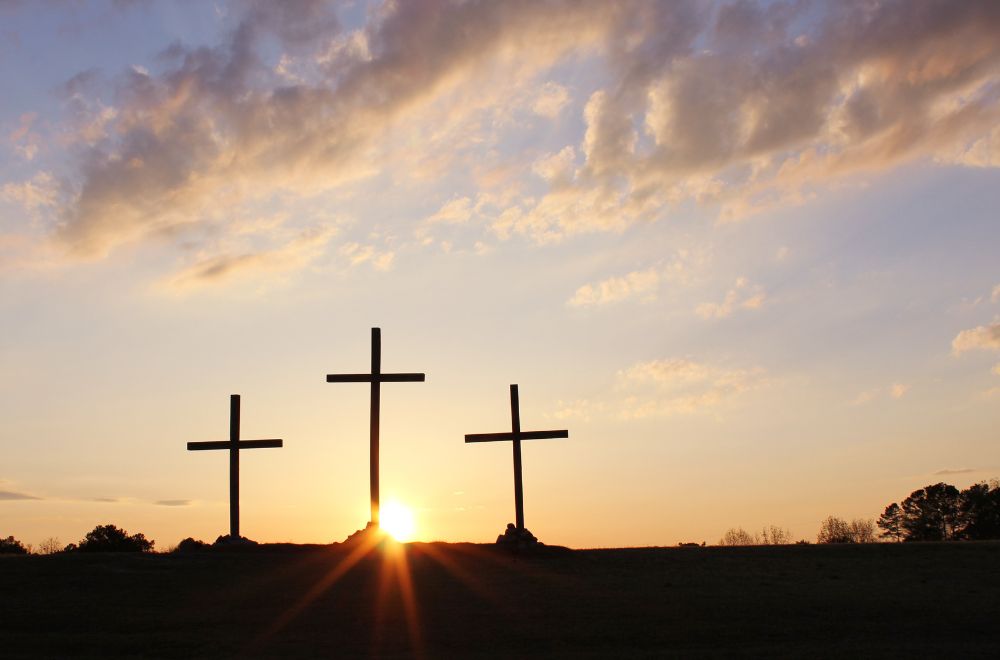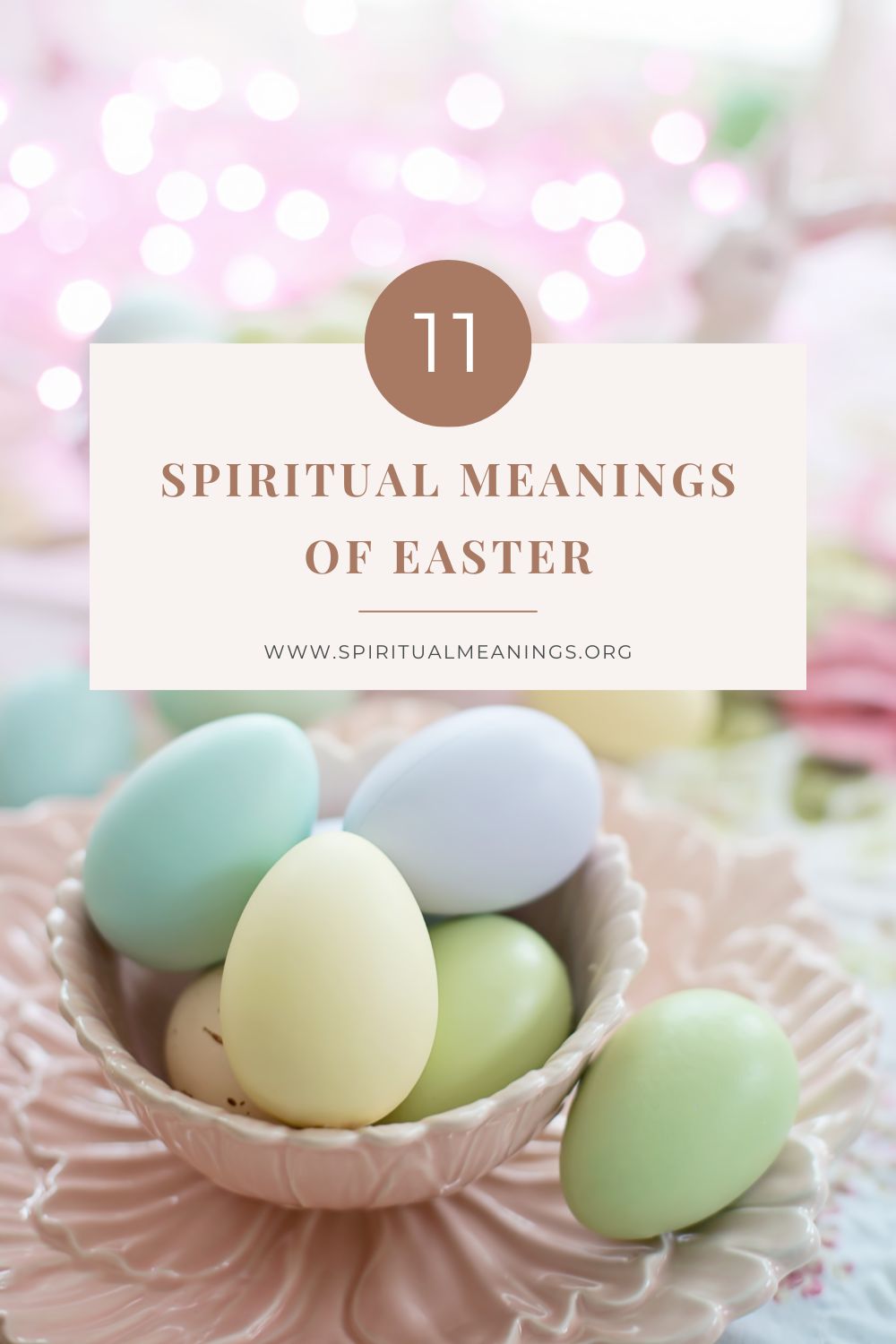Easter is a Christian festival of great significance, but some elements of Easter have pagan roots that stretch much further back into the past.
Whether you are Christian or not, there are many aspects of Easter that you can observe and enjoy, and to help you understand more, in this post, we look at 11 spiritual meanings of Easter.
Spiritual Meanings of Easter
1. The Resurrection of Jesus after the Crucifixion
To Christians, Easter is one of the most important celebrations of the year and commemorates the resurrection of Jesus Christ three days after his death by crucifixion.
This event constitutes one of the key tenets of the Christian faith since it represents the culmination of Jesus’ life on Earth and the fulfilment of the prophecy whereby he would give his life to save mankind, allowing the faithful to enjoy an eternal afterlife in Heaven.
This means for Christians, Easter is an important festival of remembrance and commemoration of the life of Jesus and his ultimate sacrifice on the cross, an act that is fundamental to the Christian faith.
Easter is preceded by the Holy Week, which begins on the Sunday before Easter, the day when Jesus is said to have entered Jerusalem.
The Holy Week also includes Maundy Thursday, which commemorates the rite of the washing of the feet, and the Last Supper, the final meal Jesus shared with his disciples before his execution on the cross.
2. A connection to Passover
Early Christians celebrated Easter on the same day as the Jewish Passover festival.
This is because according to Jewish tradition, days are counted from evening to evening, which means Jesus shared the Last Supper with his disciples on the evening of Passover and was then crucified on the same day.
However, later Christians rejected this idea and the dependence on the Jewish calendar to determine the date of Easter. Many believed that since Jesus was resurrected on a Sunday, Easter should also be celebrated each year on a Sunday.
Even so, choosing the correct date for Easter celebrations was long controversial due to disagreements about astronomical calculations and the use of different calendars.
Nowadays, Easter is celebrated on the first Sunday after the ecclesiastical full moon that occurs on or soonest after 21 March.
3. Lent
Another important aspect of Easter celebrations is Lent, the 40-day period leading up to Easter.
This period represents the 40 days Jesus spent fasting in the desert while resisting the temptations of Satan.
Spiritually and religiously, Lent is the period Christians traditionally spend preparing for the celebration of Easter through prayer and other acts such as mortifying the flesh, repentance of sins, almsgiving, simple living, giving up luxuries, self-denial and fasting.
The period of 40 days also has other significance since this was the amount of time spent by Moses in the mountains before receiving the Ten Commandments. It was also the same amount of time the prophet Elijah spent in the mountains praying before God came to him.
As well as fasting or abstaining from certain foods, many Christians also abstain from drinking alcohol during Lent for similar reasons.
4. The origins of the word “Easter”
Although it is a Christian festival, some aspects of Easter were derived from earlier pagan practices and adapted to Christianity, and even the word “Easter” probably has pagan or pre-Christian origins.
It is thought that this word is most likely derived from Ēostre, the name of a Saxon spring festival and also the name of a West Germanic spring goddess. However, this etymology has not been proved conclusively and is still debated.
In Latin and Greek, the festival was known as “Pascha”, which comes from the Aramaic Paskha and is related to the Hebrew Pesach. This has given us the word for Easter in some other languages such as Pascua in Spanish, Pasqua in Italian and Páscoa in Portuguese.
5. Easter bunnies
Nowadays, even for non-Christians, one of the most enduring symbols of Easter is the Easter Bunny, and rabbits have long been associated with this time of year, probably since well before the Christian festival of Easter existed.
Since baby rabbits appear in spring, they represent the end of winter, the arrival of warmer weather, the lengthening of days and the return of the good times after the hardships of the coldest part of the year.
Spring is seen as a time of rebirth and rejuvenation, and with their renowned fertility and capacity to multiply, rabbits are an obvious symbol of this.
In pre-Christian times, rabbits – or at least hares – were also seen as a symbol of the Moon, and since the date of Easter came to depend on the Moon, the rabbit also became associated with Easter.
Finally, rabbits and hares live in burrows, and a rabbit or hare emerging from its burrow can be seen as symbolic of Jesus emerging from his tomb.
This gave rabbits another connection to the Christian story, which may also be why they became connected to Easter and were adopted into the celebration of the Christian festival.
6. Easter eggs
Like bunnies, eggs are another obvious symbol of rebirth and new life, and unsurprisingly, they were associated with the arrival of spring long before Christians began celebrating Easter.
Each year in spring, chicks hatch from their eggs, representing birth and the continuous cycle of life and death, and as a result, they became intrinsically linked to the end of winter and the return of warmth and life to the land.
This was noticed by many cultures around the world, and eggs were traditionally given at this time of year by cultures as diverse as the ancient Greeks, the Persians, the Chinese and many others.
With the arrival of Christianity, eggs were readily adopted as part of the celebration of Easter due to their connection with the idea of birth – or rebirth and resurrection – after the long, cold months of winter.
It is thought that in early Christian communities in Mesopotamia, eggs were stained red to represent the blood of Christ, which gave rise to the practice of painting or decorating eggs at Easter.
For Christians, empty Easter eggs also came to symbolize the empty tomb of Christ, which is another reason the tradition endured.
During Lent, some people gave up eating eggs, only being able to eat them again with the arrival of Easter, which gives them another connection to the festival.
Eventually, chocolate eggs appeared, and again, this was partly due to the idea that some people might give up eating chocolate during Lent, so the arrival of Easter represents being allowed to consume chocolate again after 40 days of abstinence.
7. Lambs
Like eggs and bunnies, lambs are an obvious symbol of spring and the changing of the seasons because springtime is when young lambs are born and are seen running around in fields.
However, the connection of lambs with Easter has more to do with Jewish Passover customs because it is traditional to slaughter a lamb on that day as a sacrifice.
8. New life
In the modern world, even non-Christians may celebrate Easter in their own ways since it coincides with public holidays in many Western countries.
Furthermore, many people who are spiritual rather than religious may also wish to celebrate Easter as a festival marking the changing of the seasons and the end of winter.
For these people, Easter can be seen as a time that represents new life and when chicks emerge from their eggs, bunnies and lambs are born and green plants start to shoot up again after the dark, cold months of winter.
9. Renewal
Similarly, even non-Christian people can enjoy Easter as a time that marks renewal and rebirth, even if they don’t connect it directly to the resurrection of Jesus after his execution on the cross.
For the non-religious, Easter can be a time for new beginnings, setting goals and making plans for the coming months.
It’s a time when people feel invigorated after the dreary winter months and a time when people have new energy and enthusiasm to dedicate themselves to new projects.
10. Hope
With the changing of the seasons comes new hope and optimism for the spring and summer ahead, and this is something that can be felt by Christians and non-Christians alike.
People can give thanks for the arrival of spring and express hope for the coming year, whether that’s through prayer to God or through whatever other spiritual practices they choose to use.
11. Introspection
Finally, Easter is a time for introspection when one can reflect on one’s faith or one’s spirituality and feel a deep connection to God, nature, the world and the wider universe we inhabit, whether or not we believe the world was created by the Christian God.
A lively and enjoyable Christian festival
The main signification of Easter is the commemoration of the crucifixion of Jesus and the sacrifice he made by dying on the cross, and it remains primarily a religious festival. However, many elements that make up the festival can be enjoyed by Christians and non-Christians alike.
Nowadays, many children in Western countries receive Easter eggs, even if they don’t come from religious families, and spiritual people may also celebrate the festival as a way of marking the joyful changing of the seasons and rebirth after the cold, long months of winter.

